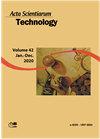Classifying the physical activity indicator using machine learning and direct measurements: a feasibility study
IF 0.6
4区 综合性期刊
Q3 MULTIDISCIPLINARY SCIENCES
引用次数: 0
Abstract
Low levels of physical activity (PA) are related to an increased risk of death, hypertension, coronary disease, stroke, diabetes, and depression. Then, assessing the level of PA of a person is essential to create training programs that help prevent such risks. However, current measurements of PA are mainly subjective and tend to underestimate or overestimate the PA level of a person. This article intends the result of a pilot cross-sectional feasibility study that pretends to classify the PA level through direct and objective measurements. For this, direct measurements such as anthropometric and postural sway (PS) features from fifteen participants (8 Male and 7 Women) were obtained. To predict the level of PA machine learning technique of Support Vector Machines SVM was used. The classifier showed high F1, recall, and precision scores around 80%, and after feature importance selection and hyperparameter were tunned, they reached 100%. Results suggest that the use of direct measurements to classify the PA level is feasible and that there is a correlation between direct measurements and the IPAQ-SF, an indirect measurement that is typically used to assess the level of PA. This classifier intends to be a tool that helps trainers and physicians to endorse or adjust their physical training and rehabilitation procedures based on the objective evaluation of patients.使用机器学习和直接测量对体力活动指标进行分类:可行性研究
低水平的身体活动(PA)与死亡、高血压、冠心病、中风、糖尿病和抑郁症的风险增加有关。然后,评估一个人的PA水平对于制定有助于预防此类风险的培训计划至关重要。然而,目前的PA测量主要是主观的,往往低估或高估一个人的PA水平。本文旨在通过直接和客观的测量对PA水平进行分类的试点横断面可行性研究的结果。为此,获得了15名参与者(8名男性和7名女性)的人体测量学和姿势摇摆(PS)特征等直接测量结果。采用支持向量机(SVM)的机器学习技术预测PA的水平。该分类器的F1、查全率和准确率均在80%左右,经过特征重要性选择和超参数调整后达到100%。结果表明,使用直接测量来分类PA水平是可行的,并且直接测量与IPAQ-SF之间存在相关性,IPAQ-SF是通常用于评估PA水平的间接测量。该分类器旨在成为一种工具,帮助教练和医生认可或调整他们的身体训练和康复程序的基础上,客观评价的病人。
本文章由计算机程序翻译,如有差异,请以英文原文为准。
求助全文
约1分钟内获得全文
求助全文
来源期刊

Acta Scientiarum-technology
综合性期刊-综合性期刊
CiteScore
1.40
自引率
12.50%
发文量
60
审稿时长
6-12 weeks
期刊介绍:
The journal publishes original articles in all areas of Technology, including: Engineerings, Physics, Chemistry, Mathematics, Statistics, Geosciences and Computation Sciences.
To establish the public inscription of knowledge and its preservation; To publish results of research comprising ideas and new scientific suggestions; To publicize worldwide information and knowledge produced by the scientific community; To speech the process of scientific communication in Technology.
 求助内容:
求助内容: 应助结果提醒方式:
应助结果提醒方式:


